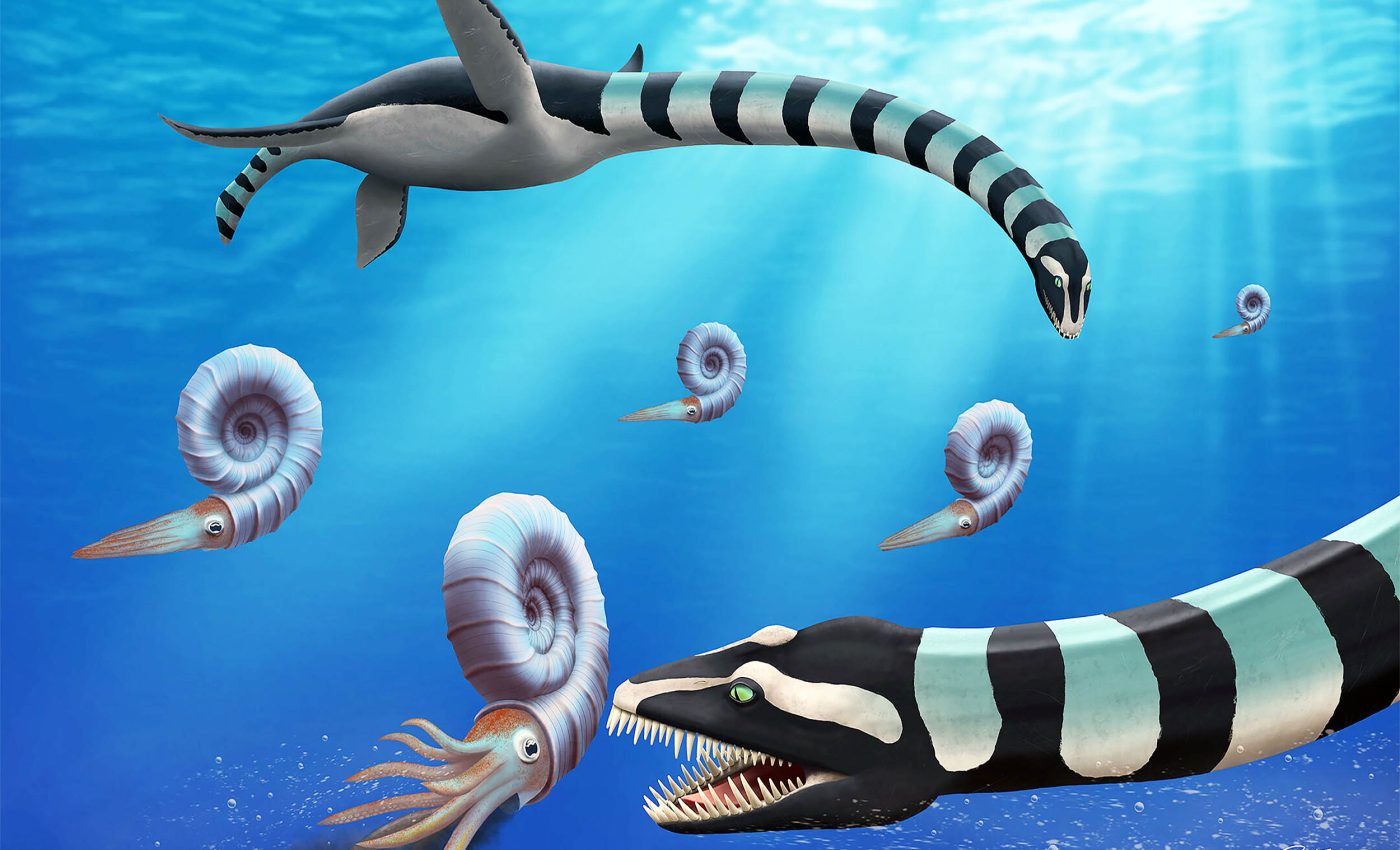
Scientists identify a 'very odd' new sea monster, unlike any previously known
About 85 million years ago, when dinosaurs still walked the Earth, the ocean that covered parts of what is now Vancouver Island was home to many types of long-necked marine reptiles called elasmosaurs – a family of marine reptiles that fell under the broader group known as plesiosaurs.
In 2002, scientists discovered the first fossil of one of these creatures in a rock layer known as the Haslam Formation. Since the original discovery, more bones have turned up, including a nearly complete skeleton of a young animal.
Thanks to these finds, researchers from Marshall University, alongside colleagues in Canada and Chile, have confirmed that this fossil, along with bones from two others, belong to a brand-new genus and species of elasmosaur that they named Traskasaura sandrae.
Why Traskasaura sandrae is special
What makes Traskasaura so fascinating is the strange way it blends features from both ancient and more advanced versions of marine reptiles. Its jaw and neck look a lot like what you’d see in older elasmosaurs, with big teeth and a long string of neck bones.
But parts of its shoulders and flippers seem more modern – closer to those of the newer species in its family. It’s kind of like finding an old car with a futuristic dashboard inside.
“When I first saw the fossils and realized they represented a new taxon, I thought it might be related to other plesiosaurs from the Antarctic,” explained Professor F. Robin O’Keefe, the study’s lead author.
Even though it shares some advanced features, it turns out Traskasaura sandrae didn’t evolve from those more modern elasmosaurs. Instead, it developed similar traits on its own path – what scientists call convergent evolution.
“My Chilean colleague Rodrigo Otero thought differently, and he was right; Traskasaura is a strange, convergently evolved, fascinating beast.”
When researchers placed it in the family tree, it landed closer to the earlier branches, meaning it’s more primitive overall, but with some clever upgrades.
Fearsome marine predator
Measuring around 12 meters (39 feet) in length and boasting a neck made up of at least 50 bones, Traskasaura sandrae was unlike any other sea creature of its time.
Its teeth were sharp, strong, and thick – perfect tools for crushing prey. Researchers believe these features indicate a unique hunting behavior.
Rather than attacking from below or the side, Traskasaura likely descended from above, using its downward swimming ability to ambush prey.

The team also proposed that ammonites – shell-covered marine animals that were common in the area – may have been on the menu.
These would have been a suitable prey since Traskasaura’s robust teeth were ideal for crushing ammonite shells, according Professor O’Keefe.
Traskasaura sandrae‘s scientific journey
Although the species has only now been formally named, its fossils have been part of scientific and public life for years.
The first specimen from the Haslam Formation was uncovered in 1988 by Michael and Heather Trask, along the banks of the Puntledge River. Since then, two more fossilized individuals have been recovered from the same area.
The original 1988 fossil was initially described in 2002 but wasn’t immediately classified as being in a new genus. The evidence wasn’t strong enough at the time – there simply weren’t enough clear, distinct features in the adult skeleton.
That changed when a new, well-preserved juvenile skeleton was found. This new discovery gave scientists the confidence to identify and officially name the genus and species.

“The scientific confusion concerning this taxon is understandable,” O’Keefe continued. “It has a very odd mix of primitive and derived traits. The shoulder, in particular, is unlike any other plesiosaur I have ever seen, and I have seen a few.”
In 2018, the fossils gained wider fame when they were selected as the Provincial Fossil of British Columbia, following a public poll. They now reside on public display at the Courtenay and District Museum and Palaeontology Centre.
Pride of British Columbia
The genus name Traskasaura honors the discoverers, Michael and Heather Trask. This is combined with “saura” which is derived from the Greek word for lizard.
The species name sandrae pays tribute to Sandra Lee O’Keefe, who is remembered by the authors as a valiant warrior in the fight against breast cancer.
“Fittingly, a region known for its rich marine life today was host to strange and wonderful marine reptiles in the Age of Dinosaurs, Professor O’Keefe concluded.”
To sum it all up, Traskasaura sandrae brings a long-standing mystery to an end and gives British Columbia a marine reptile it can truly call its own.
After decades of uncertainty, thanks to a remarkable juvenile fossil and a team of international scientists, this ancient sea creature finally has a name, a story, and a place in the prehistoric spotlight.
The full study was published in the journal Journal of Systematic Palaeontology.
—–
Like what you read? Subscribe to our newsletter for engaging articles, exclusive content, and the latest updates.
Check us out on EarthSnap, a free app brought to you by Eric Ralls and Earth.com.
—–













